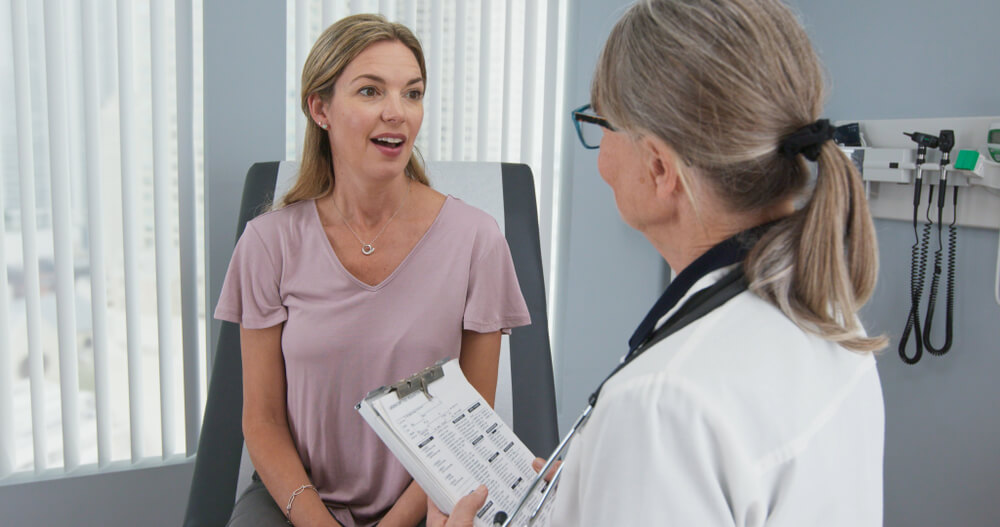Have you ever wondered why your lower back constantly aches or why you often experience discomfort in your hips? The answer could lie in a common postural issue known as anterior pelvic tilt. This condition affects many people and can lead to various musculoskeletal problems if left unaddressed. But fret not! In this article, your trusted gynecologist in Boca Raton & Boynton Beach, FL, will explore what anterior pelvic tilt is, its causes, symptoms, and, most importantly, how to fix it properly. So, let’s dive in and discover the secrets to a healthier and more aligned pelvic posture!
What Is Anterior Pelvic Tilt?

Anterior pelvic tilt refers to the forward rotation of the pelvis, causing the front of the pelvis to tilt downward and the back to arch excessively. This creates an exaggerated curvature in the lower back, commonly referred to as a “swayback” posture. This misalignment disrupts the spine’s natural balance, affecting the distribution of weight and increasing stress on specific muscles and joints.
Potential Causes of Anterior Pelvic Tilt
Several factors contribute to the development of the tilted pelvis. One primary cause is prolonged sitting. In our modern sedentary lifestyle, many individuals spend long hours sitting at desks or in front of screens, leading to weak and tight muscles. The hip flexors, which become shortened from prolonged sitting, are particularly influential in developing anterior pelvic tilt.
Other causes of anterior pelvic tilt include weak abdominal and gluteal muscles, imbalances between the anterior and posterior muscles of the hips, and even genetic predispositions. It’s essential to understand these causes to effectively address and prevent anterior pelvic tilt.
Biggest Risk Factors
Certain risk factors increase the likelihood of developing a tilted pelvis. Individuals who spend extended periods sitting or have jobs that involve prolonged sitting, such as office workers, truck drivers, and programmers, are more prone to this postural issue. Athletes who focus heavily on exercises that neglect the posterior chain, like excessive abdominal training without proper gluteal activation, may also experience anterior pelvic tilt.
Additionally, people with a sedentary lifestyle, poor posture habits, or those who have experienced previous injuries or trauma to the lower back or hips are at an increased risk. By identifying these risk factors, we can take proactive steps toward prevention and correction.
The Symptoms of Anterior Pelvic Tilt
Anterior pelvic tilt manifests through various physical symptoms that can greatly impact your daily life. Some common symptoms include persistent lower back pain, tight hip flexors, a protruding abdomen, and reduced hip mobility. You may also notice discomfort in your glutes, hamstrings, and knees, as these muscles and joints have to compensate for the misalignment caused by anterior pelvic tilt.
Furthermore, the excessive arch in the lower back can result in poor posture, leading to a rounded upper back, forward head posture, and even breathing difficulties. It’s crucial to be mindful of these symptoms and seek proper treatment to prevent further complications.
Diagnosis With the Thomas Test
To determine whether you have anterior pelvic tilt, a simple diagnostic test called the Thomas Test can be conducted. Here’s how it works:
- Lie flat on a table or firm surface with your legs hanging off the edge.
- Bring one knee toward your chest while keeping the other leg extended and flat against the table.
- Observe the position of your extended leg. If it remains in contact with the table, parallel to the floor, without excessive lifting of the lower back, it suggests a neutral pelvic position. However, if the extended leg raises off the table or the lower back arches significantly, it indicates anterior pelvic tilt.
Prevention Tips
Before fixing anterior pelvic tilt, prevention is critical when it comes to addressing this condition. By incorporating a few simple habits into your daily routine, you can significantly reduce your risk of developing this postural issue:
- Take regular breaks from prolonged sitting: Set a timer or use smartphone apps to remind yourself to stand up, stretch, and move around every 30 minutes.
- Engage in regular exercise: Focus on strengthening your core, glutes, and hamstrings while also stretching your hip flexors and lower back.
- Practice good posture: Maintain a neutral spine alignment by sitting and standing tall, with your shoulders relaxed and your abdomen engaged.
Fixing Anterior Pelvic Tilt With Exercise

Now that we’ve covered prevention tips, let’s explore six effective anterior pelvic tilt exercises and stretches to fix the condition:
- Squats: Squats are an excellent compound exercise that engages the glutes, hamstrings, and core muscles. Start with bodyweight squats, ensuring proper form, and gradually add weights as you gain strength.
- Pelvic Tilt: Lie down on back with your feet on the floor (flat) and knees bent. Then, slowly start tilting your pelvis upward while trying to flatten your lower back against the floor. Hold for a few seconds, then release. Repeat this exercise for several repetitions.
- Kneeling Rear Leg Raises: Start on all fours, with your knees and hands on the ground. Keeping your knee bent, lift one leg backward, focusing on engaging your glutes and keeping your back stable. Lower your leg and repeat on the other side.
- Kneeling Hip Flexor Stretch: Kneel on one knee, with the other leg forward and bent at 90 degrees. Then slowly move the weight forward, feeling a stretch in the hip flexor of the kneeling leg. Hold for 30 seconds and repeat on the other side.
- The Glute Bridge: Lie on your back with your knees bent and feet flat on the floor. Engage your glutes and lift your hips off the ground until your body forms a straight line from your knees to your shoulders. Hold for a few seconds, then lower your hips back down. Repeat for several repetitions.
- The Plank: Start in a push-up position, resting on your forearms instead of your hands. Keep your entire body straight, with core muscles fully engaged. Stay like this for as long as possible without breaking the form.
Incorporate these anterior pelvic tilt exercises into your fitness routine, gradually increasing intensity and repetitions as your strength improves. Remember to listen to your body and consult a healthcare professional if you experience any pain or discomfort.
To Conclude
Anterior pelvic tilt may be a common postural issue, but it is not an insurmountable problem. By understanding its causes, symptoms, and effective fixes, you can take proactive steps toward achieving a healthier pelvic alignment. Remember to prioritize regular exercise, proper posture, and a balanced lifestyle to prevent and correct anterior pelvic tilt. With consistency and dedication, you can regain balance, alleviate discomfort, and improve your overall well-being. So, let’s start straightening up and embracing a more aligned and pain-free life!
Check our website to learn more about Women’s Health Partners and schedule your appointment!




